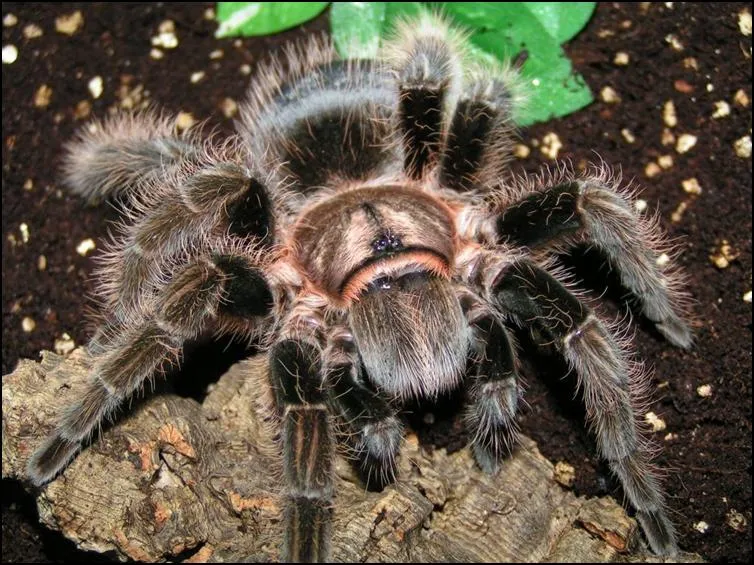The Curly Hair Tarantula (Tliltocatl albopilosus) is a popular choice for beginner tarantula keepers, known for its docile nature and striking appearance. With proper care, these fascinating creatures can thrive in captivity, offering an engaging and rewarding experience for enthusiasts. This comprehensive guide provides the top 5 tips to ensure your Curly Hair Tarantula lives a long, healthy, and fulfilling life. From choosing the right spider to understanding its needs, you’ll find all the essential information you need to provide the best possible care for your eight-legged friend. This guide will navigate through the most important aspects of their care, ensuring a happy and healthy tarantula. Ready to get started on your journey into the world of tarantulas?
Choosing Your Curly Hair Tarantula
The first step in successful tarantula keeping is choosing a healthy specimen. This sets the foundation for its long-term well-being. When selecting your Curly Hair Tarantula, take your time and observe the spider carefully. A healthy tarantula is more likely to adapt well to its new environment and thrive under your care. Pay close attention to its activity levels, physical condition, and overall behavior to ensure you’re bringing home a happy and robust spider. Remember, the initial choice is crucial for your success as a tarantula keeper, influencing the quality of life for your pet. Make an informed decision to enjoy your tarantula for years to come.
Selecting a Healthy Tarantula
Look for a tarantula that is alert and active. Avoid spiders that appear lethargic or sluggish. A healthy tarantula will typically respond quickly to stimuli, such as a gentle tap on the enclosure. Examine the spider’s physical condition, checking for any signs of injury or abnormalities. Ensure the tarantula has a plump abdomen, which indicates it is well-fed and hydrated. Avoid spiders with a shrunken abdomen, which could indicate dehydration or starvation. Ask the seller about the tarantula’s feeding habits and molting history. A tarantula that has recently molted or is about to molt may be more vulnerable and require special care.
Identifying a Healthy Tarantula
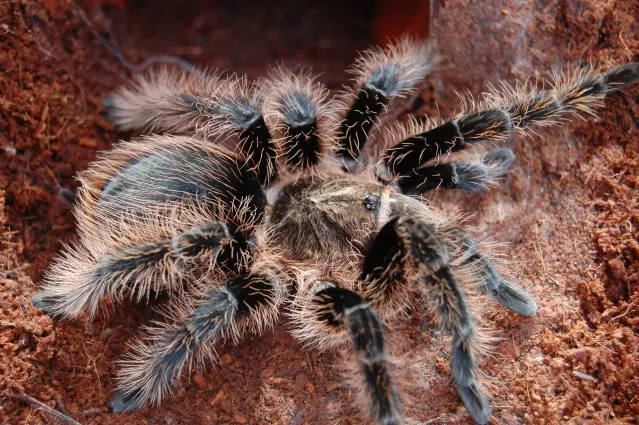
A healthy Curly Hair Tarantula should have all its legs and pedipalps intact. Check for any missing limbs or signs of injury. The fangs should be present and appear healthy. Observe the tarantula’s overall posture and movement. A healthy tarantula will move with ease and exhibit normal coordination. The abdomen should be free from any discoloration, open wounds, or signs of parasites. Be wary of any tarantula that appears listless, unresponsive, or shows signs of illness. Always purchase your tarantula from a reputable source to minimize the risk of acquiring a sick or unhealthy spider. Ensure the source provides proper care and has experience with these spiders.
Quarantine New Tarantulas
Upon bringing your new tarantula home, quarantine it in a separate enclosure for a few weeks. This precaution helps prevent the spread of any potential diseases or parasites to your other pets, if you have any. Keep the quarantine enclosure clean and observe the tarantula’s behavior and health closely during this period. Provide appropriate food and water, and monitor for any signs of illness. This step is particularly important if you are new to tarantula keeping or if you acquired the tarantula from an unfamiliar source. Proper quarantine practices are essential to safeguard the health of your new tarantula and any existing pets.
Setting Up the Perfect Habitat
Creating the right environment is essential for the well-being of your Curly Hair Tarantula. Providing a suitable habitat ensures the spider feels secure, comfortable, and able to thrive. The enclosure should mimic the spider’s natural environment as closely as possible, with appropriate temperature, humidity, and substrate. Careful habitat setup will also make it easier for you to observe and interact with your tarantula. Proper housing is not just a matter of aesthetics; it’s a critical factor in the tarantula’s health and longevity. A well-designed habitat will help you to provide optimal care and enjoy the fascinating behavior of your pet.
Enclosure Size and Type
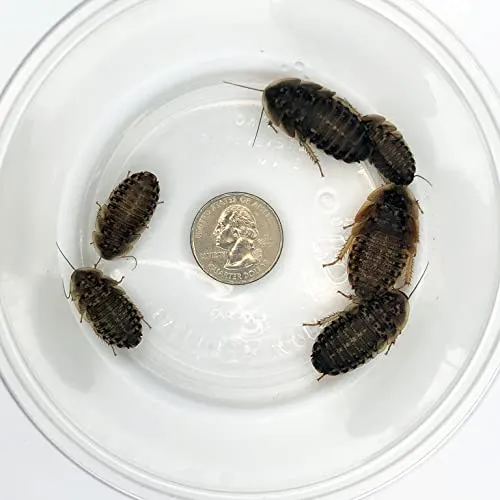
Choose an enclosure that is appropriate for the size of your tarantula. A glass or acrylic terrarium is ideal, providing clear visibility and easy access for maintenance. The enclosure should be large enough for the tarantula to move around comfortably, but not so large that it feels exposed and vulnerable. As a general guideline, a terrestrial tarantula like the Curly Hair Tarantula needs an enclosure that is wider than it is tall, as they spend most of their time on the ground. A good starting size for an adult Curly Hair Tarantula is a 10-gallon tank or larger. Ensure the enclosure has a secure lid to prevent escapes. Ventilation is also important to maintain proper air circulation and humidity levels.
Substrate and Furnishings
The substrate provides the foundation for the tarantula’s habitat. It helps to maintain humidity, allows the tarantula to burrow, and provides a naturalistic environment. Suitable substrates include a mix of coconut fiber, peat moss, and vermiculite. Avoid using substrates that contain harmful chemicals or that can mold easily. Provide a layer of substrate that is deep enough for the tarantula to burrow, typically 3-6 inches. Include furnishings such as a hide, a water dish, and some artificial or live plants. The hide provides a safe retreat where the tarantula can feel secure. Position the water dish in a location that is easily accessible and refill it regularly. The furnishings will enrich the environment and make it more naturalistic.
Temperature and Humidity
Curly Hair Tarantulas thrive in a temperature range of 75-85°F (24-29°C). You can use a heat lamp or a heat mat to maintain the desired temperature, but be sure to monitor the temperature regularly. Avoid placing the heat source directly under the enclosure, as this can overheat the tarantula. Humidity levels should be kept around 60-70%. You can monitor humidity with a hygrometer. To increase humidity, mist the enclosure with water once or twice a week, or provide a shallow water dish. Ensure proper ventilation to prevent mold growth. Maintaining the correct temperature and humidity is crucial for the health and well-being of your tarantula, as it impacts their ability to molt and stay hydrated.
Feeding Your Curly Hair Tarantula
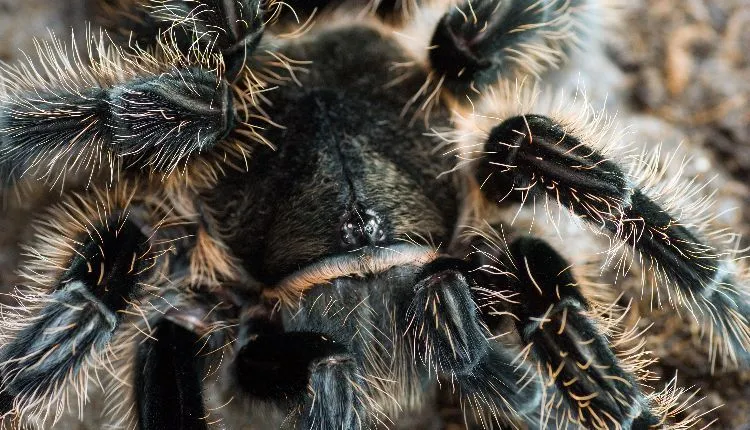
Proper nutrition is paramount to the health and growth of your Curly Hair Tarantula. A balanced diet ensures that your tarantula receives all the essential nutrients it needs to thrive. The type of food you provide, the frequency of feeding, and the overall approach to feeding are all essential aspects of tarantula care. Offering the right food in the correct amount will ensure your tarantula remains healthy and vibrant. Providing the right food is a very important aspect of responsible tarantula keeping.
What to Feed Your Tarantula
Curly Hair Tarantulas are primarily insectivores, meaning they feed on insects. The main staple of their diet should consist of appropriately sized insects, such as crickets, mealworms, dubia roaches, and other commercially available feeder insects. The size of the insect should be roughly the same size as the tarantula’s body or smaller. Avoid feeding your tarantula insects that have been exposed to pesticides. You can supplement their diet occasionally with pinkie mice, but this should be done sparingly. Always make sure the insects are gut-loaded with nutritious food before feeding them to your tarantula, as this improves the nutritional value of the meal. Variety in the diet helps to ensure that the tarantula receives a wide range of nutrients.
Feeding Frequency
Feeding frequency depends on the tarantula’s age and size. Spiderlings should be fed every other day or every day. Juveniles can be fed 2-3 times a week, while adults can be fed once or twice a week. Observe your tarantula’s feeding habits to determine its appetite. If the tarantula readily consumes its food, you can increase the frequency. If it refuses food, reduce the frequency. Ensure that uneaten insects are removed from the enclosure within 24 hours to prevent them from stressing or harming the tarantula. Remove the food immediately after feeding. Always make sure your tarantula has a source of clean, fresh water.
Watering and Hydration
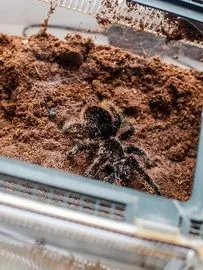
Providing clean, fresh water is crucial for your Curly Hair Tarantula’s health and hydration. Tarantulas need water to stay hydrated, molt properly, and maintain their overall well-being. Dehydration can lead to serious health problems, including difficulties during the molting process. Therefore, it’s essential to establish a reliable and safe water source. A hydrated tarantula is a healthy tarantula, so making sure they always have access to water is paramount.
Use a shallow water dish that is appropriately sized for the tarantula. The dish should be shallow enough to prevent drowning. Provide fresh water in the dish at all times, and change the water regularly to keep it clean. Consider using a cotton ball or sponge in the water dish, especially for smaller tarantulas, to prevent them from accidentally drowning. You can also mist the enclosure lightly with water, particularly during molting, to increase humidity. The humidity helps the tarantula to shed its old exoskeleton. Always monitor the water level and cleanliness to ensure your tarantula stays well-hydrated.
Maintaining the Habitat
Regular maintenance is crucial for keeping your Curly Hair Tarantula’s habitat clean and healthy. Cleaning the enclosure helps prevent the buildup of waste, mold, and bacteria, which can be detrimental to the tarantula’s health. A clean habitat also makes it easier to monitor the tarantula’s health and behavior. Regular cleaning and maintenance contribute significantly to the well-being and longevity of your pet. By prioritizing habitat maintenance, you’re not just providing a clean living space but also ensuring a healthy environment for your tarantula to thrive.
Cleaning and Maintenance
Spot-clean the enclosure weekly by removing any uneaten food, molted exoskeletons, and fecal matter. You can use tongs or a small scoop to remove debris. The substrate should be partially replaced every few months or as needed, depending on the type of substrate used and the size of the enclosure. When replacing the substrate, carefully remove the tarantula and place it in a temporary container. Clean the enclosure with warm water and a mild soap, then rinse it thoroughly to remove all soap residue. Allow the enclosure to dry completely before returning the tarantula. Check the temperature and humidity regularly, and make adjustments as needed to maintain optimal conditions. Inspect the enclosure for any signs of mold or pests, and take corrective action immediately if found.
Handling Your Tarantula
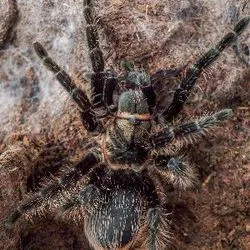
While Curly Hair Tarantulas are generally docile, it’s important to approach handling with caution. Understanding your tarantula’s behavior and taking the necessary safety precautions can minimize risks and ensure a positive interaction. Handling should be done with care and respect for the spider, and only when necessary. Always prioritize the tarantula’s safety and well-being. It is important to understand their natural behaviors. Proper handling is essential to keep both you and the tarantula safe.
Understanding Tarantula Behavior
Before handling your tarantula, observe its behavior. If the tarantula appears stressed or defensive, it’s best to avoid handling. Some tarantulas may flick urticating hairs as a defense mechanism. These hairs can cause skin irritation. Curly Hair Tarantulas are generally not aggressive but can bite if they feel threatened. Avoid sudden movements or actions that might startle the tarantula. Be patient and gentle, and allow the tarantula to approach you if it is comfortable. Understanding the tarantula’s body language is critical to handling it safely. Recognizing signs of stress or aggression can help you prevent a bite or other negative interactions.
Safety Precautions
If you choose to handle your tarantula, do so over a soft surface, such as a bed or carpet, in case it falls. Always wash your hands thoroughly before and after handling your tarantula. Avoid using scented soaps or lotions, as these can be harmful to the spider. Never handle a tarantula if you are unsure of its temperament or if you are inexperienced. If you are bitten by a tarantula, remain calm and clean the wound with soap and water. If you experience any severe reactions, seek medical attention immediately. Always supervise children when they are near a tarantula. Teach them about tarantula care and handling, emphasizing safety. Be responsible and take precautions.
Health and Common Issues
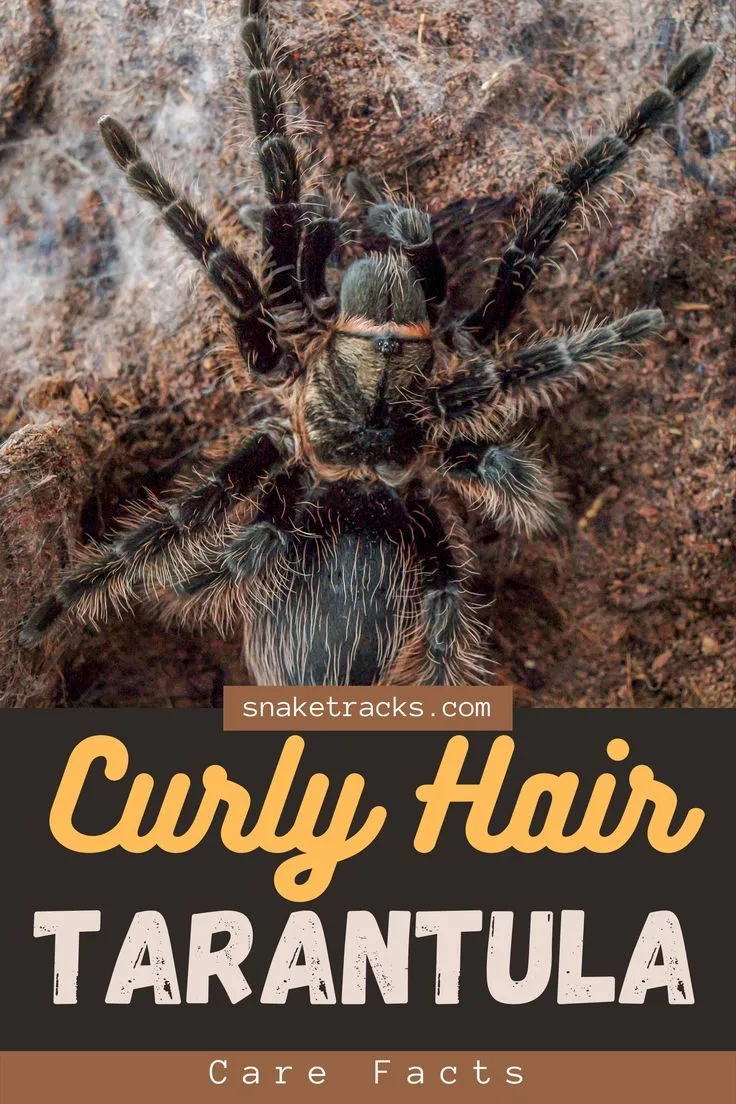
Like any pet, Curly Hair Tarantulas can experience health problems. Recognizing the signs of illness and understanding common issues will help you provide timely care and prevent serious complications. Knowing the common health issues and how to address them will contribute to your ability to give the best care to your tarantula. Maintaining a healthy tarantula requires vigilance and prompt action to minimize suffering and keep your pet thriving.
Molting Process
Molting is a natural process where the tarantula sheds its exoskeleton to grow. During molting, the tarantula will typically stop eating and may become inactive. The molting process can take several hours or even days, depending on the size and age of the tarantula. It’s crucial not to disturb the tarantula during this time. Provide a humid environment to aid the molting process. After molting, the tarantula’s fangs will be soft and vulnerable for a short period. Avoid feeding the tarantula until its fangs have hardened. Molting is a vital process, and supporting it is essential for your tarantula’s well-being. Understanding the molting cycle is an important part of tarantula care.
Signs of Illness
Recognizing signs of illness is essential for providing prompt care. Some common signs include loss of appetite, lethargy, difficulty moving, and a shrunken abdomen. Other signs of illness include mites or parasites. If you notice any of these signs, consult with an experienced tarantula keeper or a veterinarian familiar with exotic pets. Some minor issues can be addressed with adjustments to the habitat or diet. For more serious problems, professional help is necessary. Early detection and intervention are crucial for successful treatment and recovery. The health and happiness of your tarantula depend on your awareness and responsiveness.
Caring for a Curly Hair Tarantula can be a rewarding experience. By following these tips, you can ensure that your tarantula lives a long, healthy, and fulfilling life. Remember to provide a suitable habitat, proper nutrition, and regular maintenance. Observe your tarantula’s behavior and be prepared to adjust your care as needed. Enjoy the fascinating world of tarantula keeping, and appreciate the unique beauty of these amazing creatures. With proper care, your Curly Hair Tarantula will bring you years of enjoyment.
